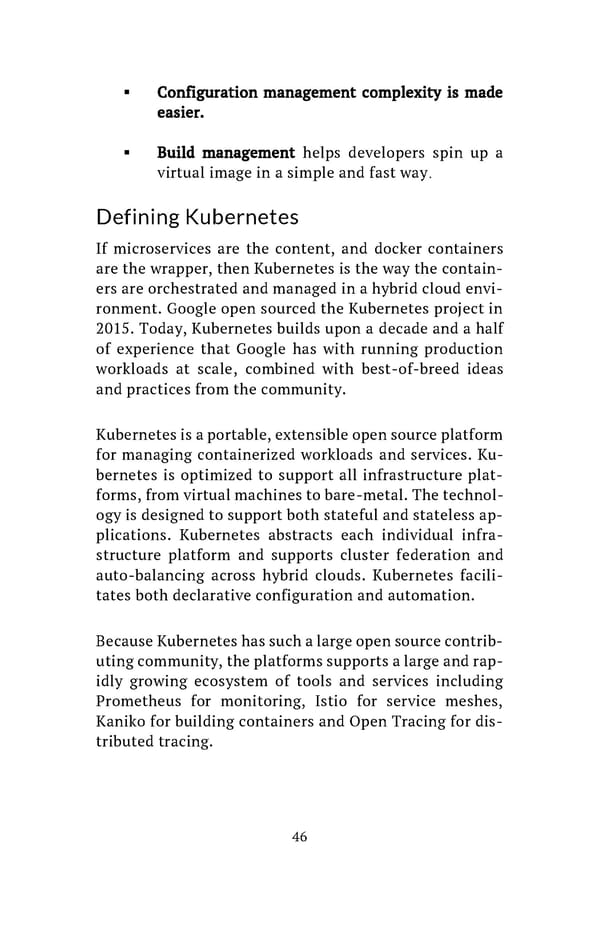▪ Configuration management complexity is made easier. ▪ Build management helps developers spin up a virtual image in a simple and fast way. Defining Kubernetes If microservices are the content, and docker containers are the wrapper, then Kubernetes is the way the contain- ers are orchestrated and managed in a hybrid cloud envi- ronment. Google open sourced the Kubernetes project in 2015. Today, Kubernetes builds upon a decade and a half of experience that Google has with running production workloads at scale, combined with best-of-breed ideas and practices from the community. Kubernetes is a portable, extensible open source platform for managing containerized workloads and services. Ku- bernetes is optimized to support all infrastructure plat- forms, from virtual machines to bare-metal. The technol- ogy is designed to support both stateful and stateless ap- plications. Kubernetes abstracts each individual infra- structure platform and supports cluster federation and auto-balancing across hybrid clouds. Kubernetes facili- tates both declarative configuration and automation. Because Kubernetes has such a large open source contrib- uting community, the platforms supports a large and rap- idly growing ecosystem of tools and services including Prometheus for monitoring, Istio for service meshes, Kaniko for building containers and Open Tracing for dis- tributed tracing. 46
 Building Cloud Native Apps Painlessly Page 51 Page 53
Building Cloud Native Apps Painlessly Page 51 Page 53